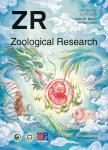Dynamic foraging strategy adaptation to heterogeneous environments contributes to social aggregation in snub-nosed monkeys
作者机构:College of Life SciencesNorthwest UniversityXi’anShaanxi 710069China Chengdu Institute of BiologyChinese Academy of SciencesChengduSichuan 610041China State Key Laboratory of Environmental Criteria and Risk AssessmentChinese Research Academy of Environmental SciencesBeijing 100012China
出 版 物:《Zoological Research》 (动物学研究(英文))
年 卷 期:2024年第45卷第1期
页 面:39-54页
核心收录:
学科分类:0710[理学-生物学] 07[理学] 0713[理学-生态学]
基 金:supported by the Biodiversity Survey and Assessment Project of the Ministry of Ecology and Environment,China(2019HJ2096001006) National Natural Science Foundation of China(32001099,32170512,32370524) China Postdoctoral Science Foundation(2020M683539)
主 题:Social evolution Folivore paradox MLS Rhinopithecus roxellana Multi-benefits framework
摘 要:The dynamics of animal social structures are heavily influenced by environmental patterns of competition and *** folivorous colobine primates,prevailing theories suggest that larger group sizes should be favored in rainforests with a year-round abundance of food,thereby reducing feeding ***,paradoxically,larger groups are frequently found in high-altitude or high-latitude montane ecosystems characterized by a seasonal scarcity of *** contradiction is posited to arise from cooperative benefits in heterogeneous *** investigate this hypothesis,we carried out a six-year field study on two neighboring groups of golden snub-nosed monkey(Rhinopithecus roxellana),a species representing the northernmost distribution of colobine *** showed that the groups adjusted their movement and habitat selection in response to fluctuating climates and spatiotemporal variability of resources,indicative of a dynamic foraging ***,during the cold,resource-scarce conditions in winter,the large group occupied food-rich habitats but did not exhibit significantly longer daily travel distances than the smaller neighboring ***,we compiled an eco-behavioral dataset of 52 colobine species to explore their evolutionary *** of this dataset suggested that the increase in group size may have evolved via home range expansion in response to the cold and heterogeneous climates found at higher altitudes or ***,we developed a multi-benefits framework to interpret the formation of larger groups by integrating environmental *** cold and diverse environments,even smaller groups require larger home ranges to meet their dynamic survival *** spatiotemporal distribution of high-quality resources within these expanded home ranges facilitates more frequent interactions between groups,thereby encouraging social aggregation into larger *** process enhances the benefits of collabor



